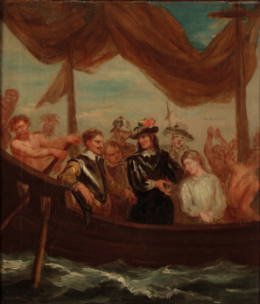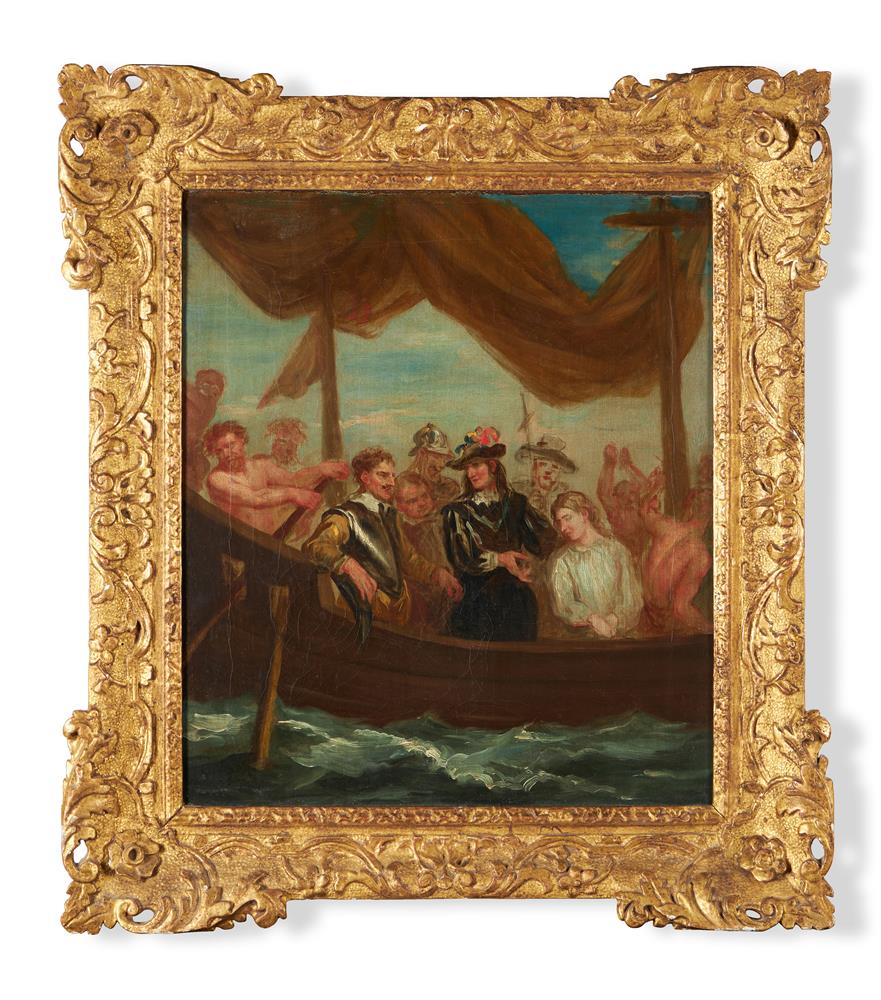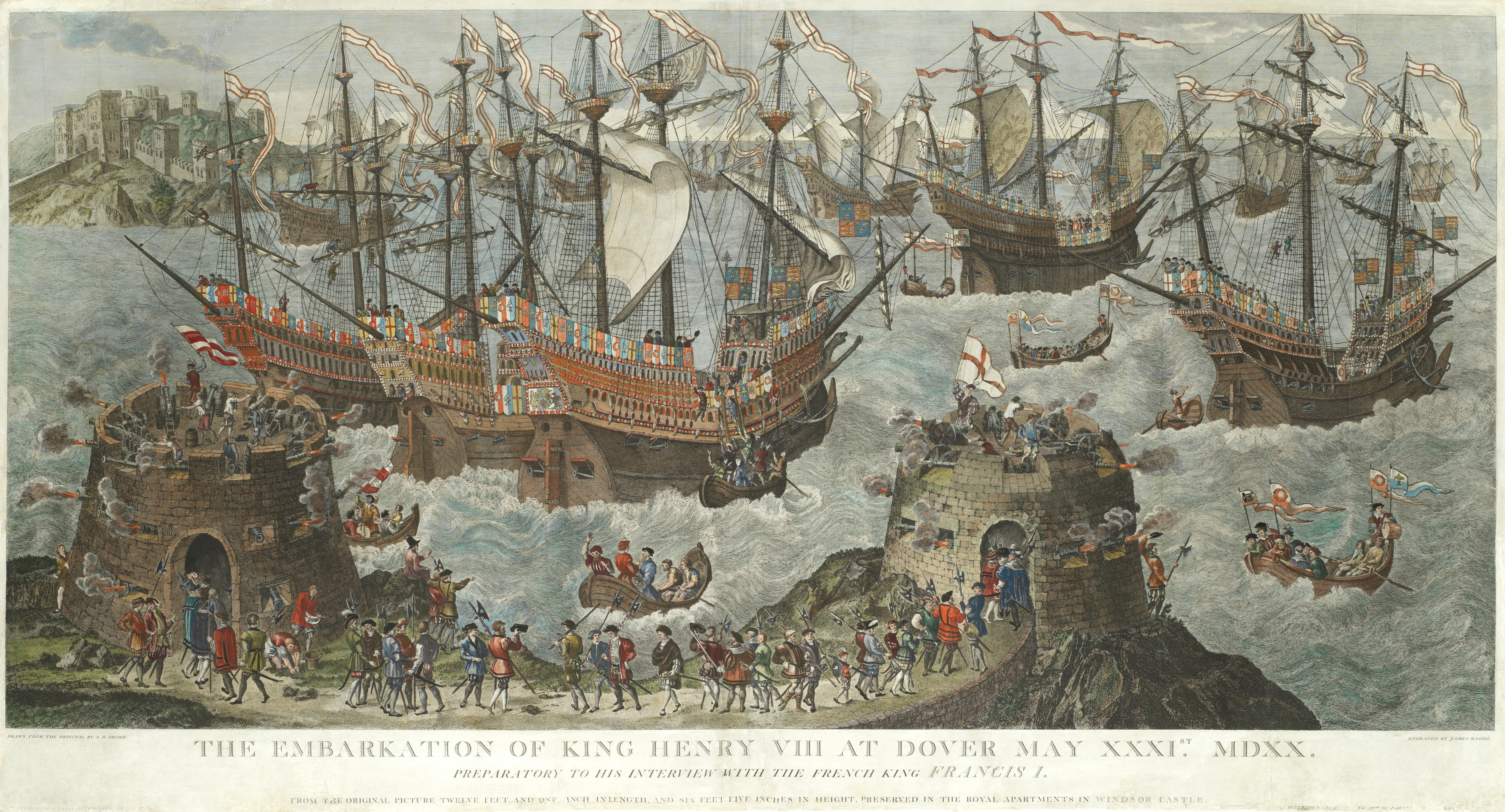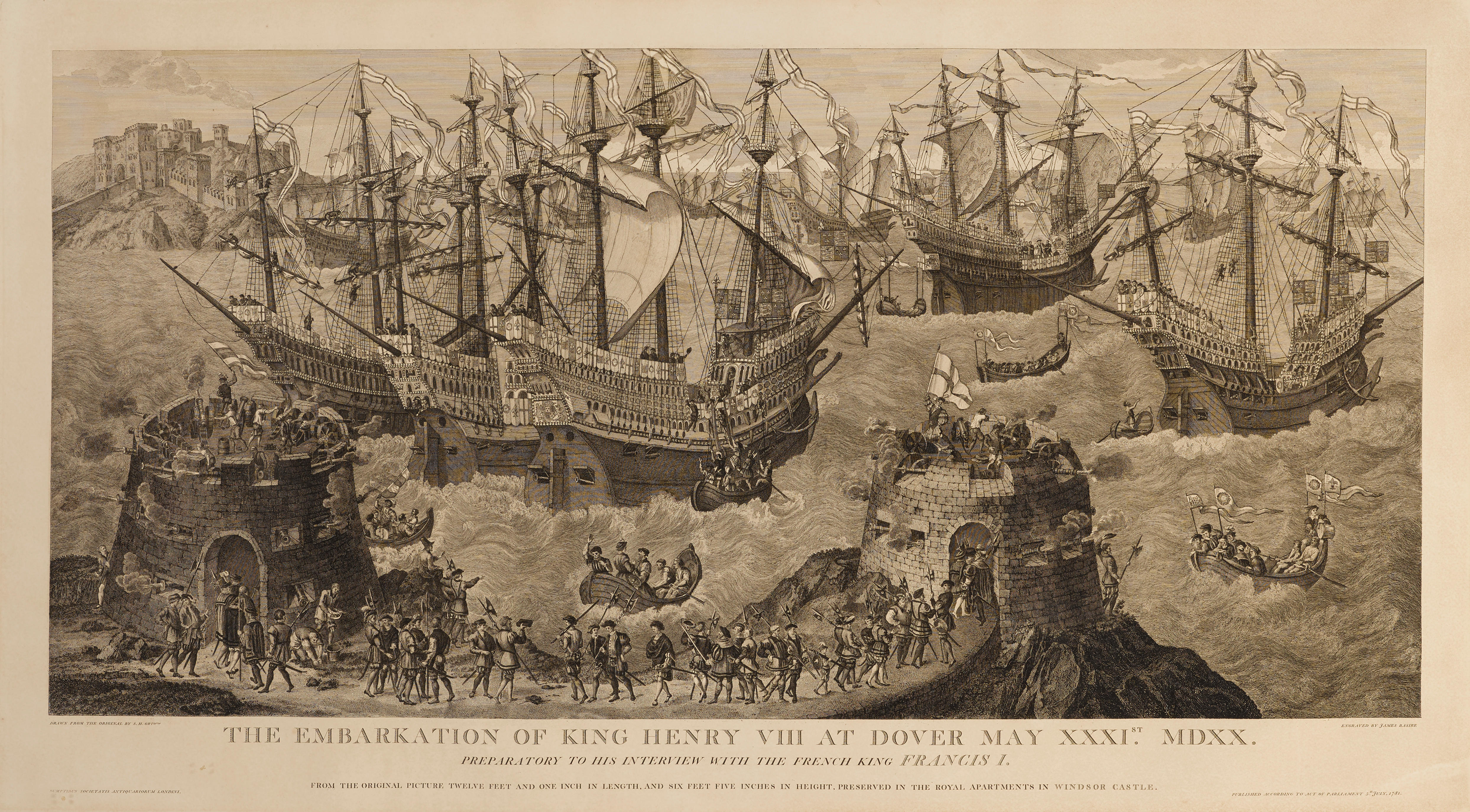William Sadler II (c.1782-1839)
Medium: oil on canvas
Size: 25½ x 40½in. (64.77 x 102.87cm)
Size: 25½ x 40½in. (64.77 x 102.87cm) The present painting is similar to a work of the same title which was exhibited at the Gorry Gallery in 'An Exhibition of 18th - 21st Century Irish Paintings' 20 May to 2 June 2012, catalogue no. 1. The 'journalistic' impulse which has been d...Read more The present painting is similar to a work of the same title which was exhibited at the Gorry Gallery in 'An Exhibition of 18th - 21st Century Irish Paintings' 20 May to 2 June 2012, catalogue no. 1. The 'journalistic' impulse which has been detected in Sadler's art drew him to record topical events such as the burning of the Royal Arcade, College Green, and he has been well characterised as a chronicler of early nineteenth century Dublin: 'Dublin was his quarry and his…paintings…record its life. (1) It is then not surprising that one of the most newsworthy events to occur in Dublin during his lifetime should have attracted his brush, the visit, in 1821, of King George IV. This was, after all, the first visit of an English monarch to Ireland since William III had landed, in very different circumstances, at Carrickfergus a hundred and thirty years earlier. The significance of the occasion can be gauged by a comparison with the excitement caused by the 2011 visit of Queen Elizabeth to Ireland. George's visit was a similarly historic event. The king's brief stay in Ireland was perceived to have been a success - despite George's best efforts. He had arrived famously drunk and suspicions persisted that the main purpose of his trip was to spend time with his mistress, Lady Conyngham, at Slane Castle. One contemporary verse mocked the notoriously obese lovers: 'Quaffing their claret, then mingling their lips, or tickling the fat above each other's hips'. More seriously, the king, on his accession, had turned his back on his liberal past. Once the friend of Sheridan, he was now an implacable opponent of Catholic Emancipation. Nevertheless, Daniel O'Connell found it politic to present the king with a laurel crown on his departure - shortly before the moment that Sadler chooses to depict - and the king 'took particular notice of this distinguished personage, shook him cordially by the hand, and accepted the tribute'. Sadler managed to convey both the goodwill that was, in general, shown to the king but also the tensions which underpinned the visit. There is a noticeable contrast between the surging crowd of Dubliners and the serried ranks of soldiers who prevent them getting too close to the action. Meanwhile, in the foreground policemen draw truncheons to deal with protesters, or perhaps just pickpockets. Sadler was far from alone in painting the pomp and circumstance of the visit. The landing of the king at Howth was the subject of an enormous oil by James Dowling Herbert (private collection) which was exhibited both at the Royal Academy and RHA; the symbolic entry into the city at the top of Sackville Street was painted by both William Turner de Lond and Joseph Haverty while de Lond also produced a vigorous sketch of the moment at which the royal processions passed the politically-charged site of the former Houses of Parliament on College Green. (2) In this later work the tensions of the visit are again apparent: 'mounted soldiers mingle with the crowd…swords are held unsheathed, bayonets fixed'. (3) Memories of the Regency Crisis, when Grattan's parliament had acted as a kingmaker in George's favour, were inevitably to the fore and both Sadler and Turner de Lond were alive to the ambiguities of the occasion. The momentous nature of the visit combined with the competition from his artistic peers, and perhaps, a proprietary feeling that he was the painter of Dublin - that this was his subject - led Sadler to produce an extraordinary work of immense ambition and scope. Several hundred figures can be seen in the present painting. It was quite possible that Sadler also had hopes of royal patronage which led him to excel himself. Haverty's picture, now
William Sadler II (c.1782-1839)
Medium: oil on canvas
Size: 25½ x 40½in. (64.77 x 102.87cm)
Size: 25½ x 40½in. (64.77 x 102.87cm) The present painting is similar to a work of the same title which was exhibited at the Gorry Gallery in 'An Exhibition of 18th - 21st Century Irish Paintings' 20 May to 2 June 2012, catalogue no. 1. The 'journalistic' impulse which has been d...Read more The present painting is similar to a work of the same title which was exhibited at the Gorry Gallery in 'An Exhibition of 18th - 21st Century Irish Paintings' 20 May to 2 June 2012, catalogue no. 1. The 'journalistic' impulse which has been detected in Sadler's art drew him to record topical events such as the burning of the Royal Arcade, College Green, and he has been well characterised as a chronicler of early nineteenth century Dublin: 'Dublin was his quarry and his…paintings…record its life. (1) It is then not surprising that one of the most newsworthy events to occur in Dublin during his lifetime should have attracted his brush, the visit, in 1821, of King George IV. This was, after all, the first visit of an English monarch to Ireland since William III had landed, in very different circumstances, at Carrickfergus a hundred and thirty years earlier. The significance of the occasion can be gauged by a comparison with the excitement caused by the 2011 visit of Queen Elizabeth to Ireland. George's visit was a similarly historic event. The king's brief stay in Ireland was perceived to have been a success - despite George's best efforts. He had arrived famously drunk and suspicions persisted that the main purpose of his trip was to spend time with his mistress, Lady Conyngham, at Slane Castle. One contemporary verse mocked the notoriously obese lovers: 'Quaffing their claret, then mingling their lips, or tickling the fat above each other's hips'. More seriously, the king, on his accession, had turned his back on his liberal past. Once the friend of Sheridan, he was now an implacable opponent of Catholic Emancipation. Nevertheless, Daniel O'Connell found it politic to present the king with a laurel crown on his departure - shortly before the moment that Sadler chooses to depict - and the king 'took particular notice of this distinguished personage, shook him cordially by the hand, and accepted the tribute'. Sadler managed to convey both the goodwill that was, in general, shown to the king but also the tensions which underpinned the visit. There is a noticeable contrast between the surging crowd of Dubliners and the serried ranks of soldiers who prevent them getting too close to the action. Meanwhile, in the foreground policemen draw truncheons to deal with protesters, or perhaps just pickpockets. Sadler was far from alone in painting the pomp and circumstance of the visit. The landing of the king at Howth was the subject of an enormous oil by James Dowling Herbert (private collection) which was exhibited both at the Royal Academy and RHA; the symbolic entry into the city at the top of Sackville Street was painted by both William Turner de Lond and Joseph Haverty while de Lond also produced a vigorous sketch of the moment at which the royal processions passed the politically-charged site of the former Houses of Parliament on College Green. (2) In this later work the tensions of the visit are again apparent: 'mounted soldiers mingle with the crowd…swords are held unsheathed, bayonets fixed'. (3) Memories of the Regency Crisis, when Grattan's parliament had acted as a kingmaker in George's favour, were inevitably to the fore and both Sadler and Turner de Lond were alive to the ambiguities of the occasion. The momentous nature of the visit combined with the competition from his artistic peers, and perhaps, a proprietary feeling that he was the painter of Dublin - that this was his subject - led Sadler to produce an extraordinary work of immense ambition and scope. Several hundred figures can be seen in the present painting. It was quite possible that Sadler also had hopes of royal patronage which led him to excel himself. Haverty's picture, now















Testen Sie LotSearch und seine Premium-Features 7 Tage - ohne Kosten!
Lassen Sie sich automatisch über neue Objekte in kommenden Auktionen benachrichtigen.
Suchauftrag anlegen